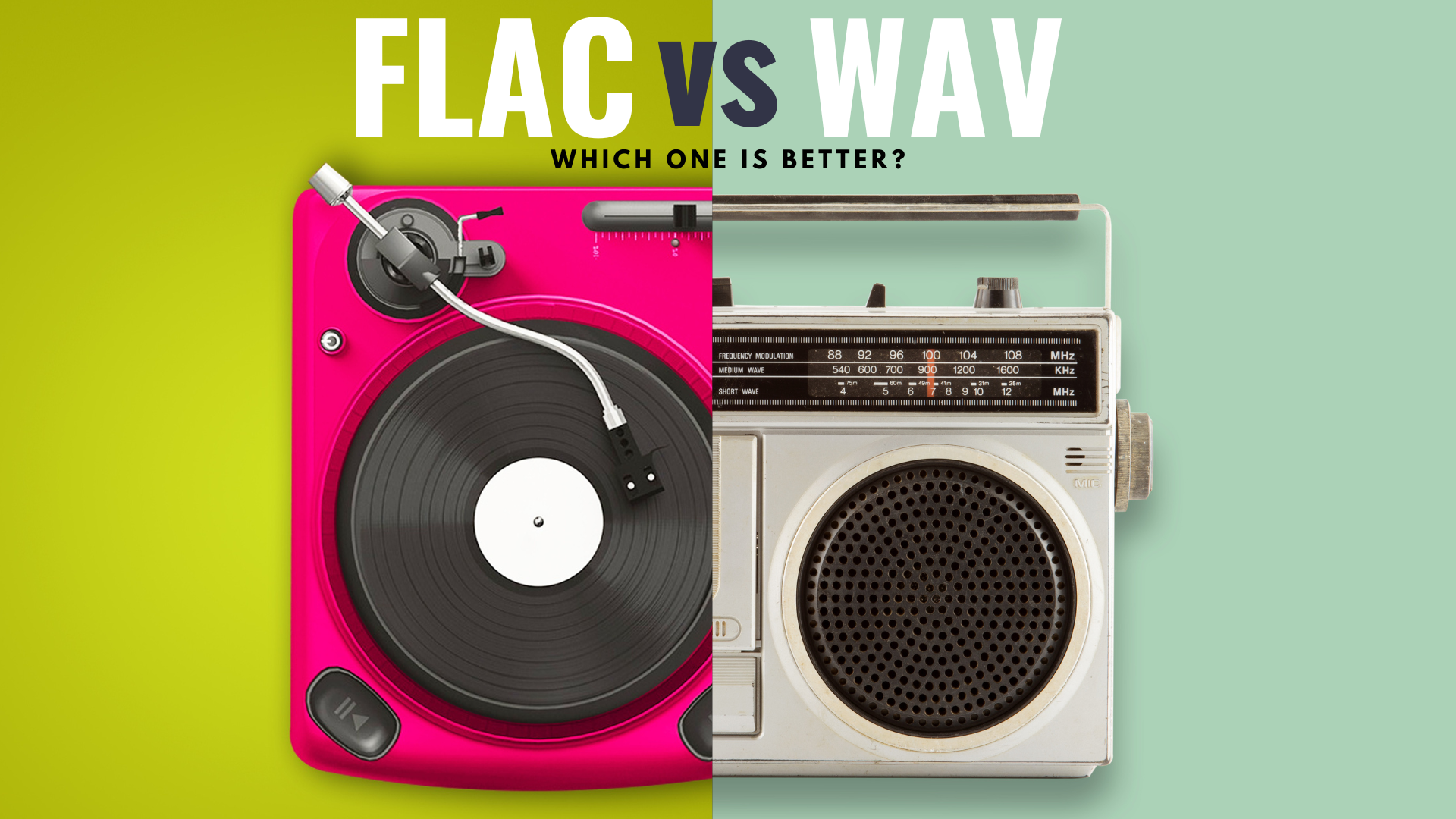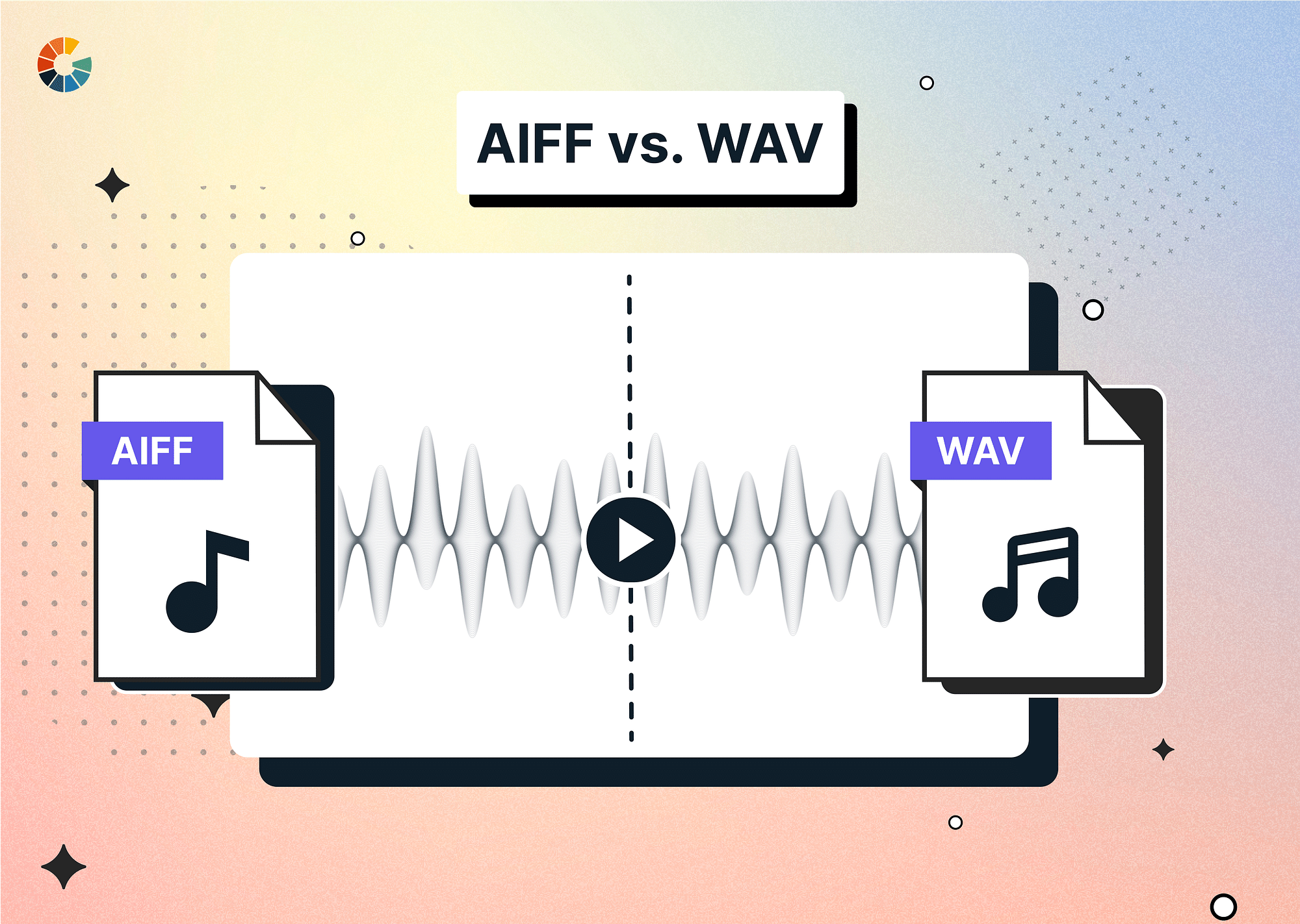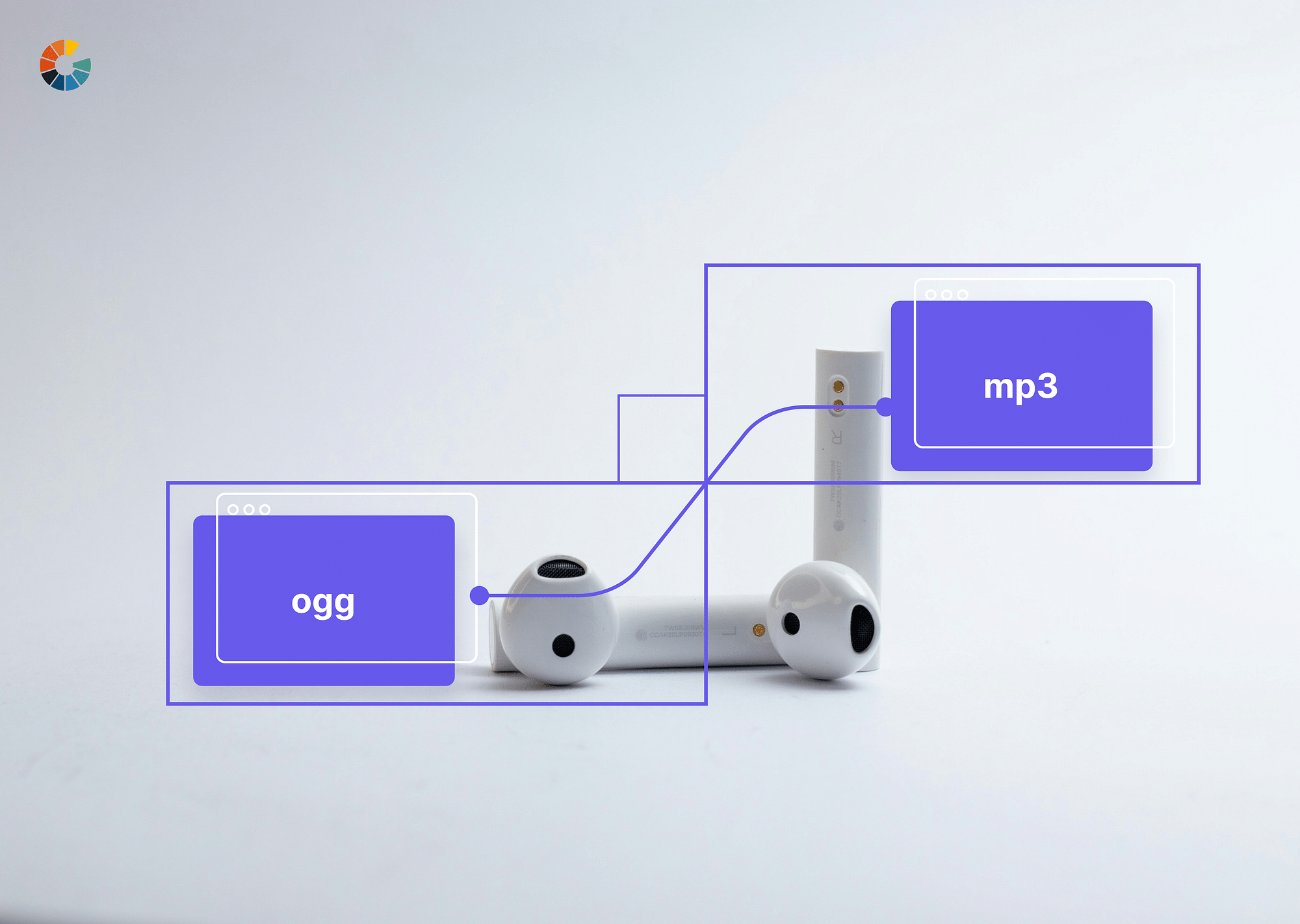When it comes to audio files, WAV vs MP3 is a debate that’s been around for ages. Both formats have their own strengths, but file size plays a crucial role in deciding which one fits your needs. Whether you're an audiophile or just someone trying to save storage space, understanding the differences can make all the difference. So, buckle up as we dive deep into the world of audio formats!
Let’s face it, digital audio is everywhere these days. From streaming music on Spotify to downloading podcasts, we rely heavily on audio files. But not all audio files are created equal. WAV and MP3 are two of the most popular formats out there, and they come with their own set of pros and cons. One of the biggest factors to consider is file size, especially if you're dealing with limited storage or bandwidth.
Before we get into the nitty-gritty details, let’s set the stage. This article will break down everything you need to know about WAV vs MP3 file size. We’ll cover the technical aspects, real-world applications, and why choosing the right format matters. By the end, you’ll have a clear understanding of which format suits your needs best. Ready? Let’s go!
- Hub4ucom The Ultimate Guide To Transforming Your Online Experience
- Gracie Bon Leaks The Truth Behind The Viral Sensation Youve Been Talking About
Table of Contents
- What is WAV?
- What is MP3?
- WAV vs MP3: File Size Comparison
- Quality Factor: Does Size Matter?
- Real-World Use Cases
- Technical Details of WAV and MP3
- Impact on Storage
- Bandwidth Considerations
- Tips for Conversion
- Conclusion
What is WAV?
Alright, let’s start with the basics. WAV, or Waveform Audio File Format, is like the golden standard of audio files. It’s uncompressed, meaning it stores every single bit of audio data without any loss. Think of it as the raw, untouched version of your favorite song. But here’s the kicker—because it’s uncompressed, WAV files tend to be HUGE. Like, seriously huge.
For example, a 3-minute song in WAV format can easily weigh in at around 30MB or more. That’s a lot of space for just one track! But hey, if you’re all about sound quality, WAV is your best friend. It’s like listening to music in its purest form, without any compromises.
Key Features of WAV
- Uncompressed audio format
- High-quality sound
- Larger file sizes
- Great for professional audio production
What is MP3?
Now, let’s talk about MP3. This is where things get interesting. MP3, or MPEG Audio Layer III, is a compressed audio format that’s designed to save space. It uses something called "lossy compression," which means it gets rid of some audio data that the human ear can’t easily perceive. The result? Smaller file sizes without sacrificing too much quality.
- Drew Gulliver Nsfw The Untold Story And What You Need To Know
- Lara Rose Birch Leak The Untold Story You Need To Know
For instance, that same 3-minute song in MP3 format might only take up around 3MB. That’s a MASSIVE difference compared to WAV. MP3 is the go-to format for most people because it strikes a great balance between quality and convenience. Plus, it’s compatible with pretty much every device out there.
Key Features of MP3
- Compressed audio format
- Smaller file sizes
- Good enough quality for casual listeners
- Universal compatibility
WAV vs MP3: File Size Comparison
So, how exactly do WAV and MP3 compare when it comes to file size? Well, it’s pretty straightforward. WAV files are typically 10 times larger than MP3 files of the same duration. This is because WAV stores all the original audio data, while MP3 discards some of it to save space.
Let’s break it down with some numbers. A 5-minute audio clip recorded at 44.1kHz and 16-bit depth will take up around 50MB in WAV format. If you convert that same clip to MP3 at 128kbps, it’ll shrink down to about 5MB. That’s a whopping 90% reduction in file size!
But here’s the thing—while MP3 files are smaller, they may not sound as good as WAV files. The level of quality depends on the bitrate you choose when encoding the MP3. Higher bitrates mean better quality but larger file sizes. It’s a trade-off that you’ll need to consider based on your needs.
File Size Comparison Table
| Format | File Size (5-minute clip) | Quality |
|---|---|---|
| WAV | 50MB | Lossless, high-quality |
| MP3 (128kbps) | 5MB | Good enough for casual listening |
| MP3 (320kbps) | 12MB | Near-CD quality |
Quality Factor: Does Size Matter?
Now, let’s talk about the elephant in the room—quality. Does file size really affect how good your music sounds? The answer is yes and no. WAV files are lossless, meaning they retain all the original audio data. This results in superior sound quality, especially if you’re using high-end equipment. But for most people, the difference isn’t noticeable.
MP3 files, on the other hand, use lossy compression, which means some audio data gets discarded. However, modern MP3 encoding algorithms are so advanced that the difference in quality is minimal, especially at higher bitrates. For casual listeners, MP3 files sound just as good as WAV files, but they take up way less space.
When Does File Size Matter?
- For professional audio production: WAV is the way to go
- For everyday listening: MP3 is more practical
- For limited storage devices: MP3 wins hands down
Real-World Use Cases
Let’s look at some real-world scenarios where WAV and MP3 might be used. If you’re a musician or audio engineer, you’ll want to use WAV files for recording and editing. This ensures that you’re working with the highest quality audio possible. Once you’re done editing, you can export your tracks as MP3 files for distribution.
For casual listeners, MP3 is the obvious choice. It’s compatible with almost every device, and the smaller file sizes make it easy to store and share. Plus, with today’s streaming services, most people don’t even bother downloading music anymore. They just stream it on demand.
Use Case Examples
- Music production: WAV
- Podcasting: MP3
- Streaming: MP3
- Backup storage: MP3
Technical Details of WAV and MP3
For those of you who like to get technical, let’s dive into the nitty-gritty details of WAV and MP3. WAV files use the PCM (Pulse Code Modulation) encoding scheme, which is essentially a digital representation of analog audio signals. This makes WAV files lossless and highly accurate, but also very large.
MP3 files, on the other hand, use a psychoacoustic model to compress audio data. This model analyzes the audio and removes parts that are less likely to be perceived by the human ear. The result is a smaller file size with minimal loss in quality. The level of compression is determined by the bitrate, which can range from 32kbps to 320kbps.
Technical Comparison
- WAV: Lossless, uncompressed, large file sizes
- MP3: Lossy, compressed, small file sizes
Impact on Storage
Storage space is a big deal, especially if you’re dealing with large collections of audio files. WAV files can quickly eat up your storage, especially if you’re working with high-resolution recordings. For example, a 1-hour WAV file at 44.1kHz and 16-bit depth will take up around 600MB. That’s a lot of space for just one hour of audio!
MP3 files, on the other hand, are much more storage-friendly. The same 1-hour audio clip encoded at 128kbps will only take up around 60MB. That’s a 90% reduction in file size, which can make a huge difference if you’re working with limited storage.
Storage Considerations
- For large collections: MP3 is more practical
- For high-quality recordings: WAV is the better choice
Bandwidth Considerations
If you’re streaming audio over the internet, bandwidth becomes a critical factor. WAV files are simply too large to stream efficiently, which is why most streaming services use MP3 or other compressed formats. MP3 files are small enough to stream smoothly, even on slower connections.
For example, streaming a 3-minute WAV file at 44.1kHz and 16-bit depth would require a bandwidth of around 10MB. That’s a lot of data for just one song! On the other hand, streaming the same song as an MP3 at 128kbps would only require around 1MB of bandwidth. That’s a huge difference, especially if you’re streaming multiple songs at once.
Tips for Conversion
If you’re thinking about converting your audio files from WAV to MP3 or vice versa, here are a few tips to keep in mind. First, always start with the highest quality source file possible. This ensures that you’re not losing any unnecessary quality during the conversion process. Second, choose the right bitrate for your needs. For casual listening, 128kbps is usually sufficient, but for audiophiles, 320kbps is the way to go.
Finally, use a reliable conversion tool. There are tons of free and paid tools available, but not all of them are created equal. Look for tools that offer high-quality encoding and support for a wide range of formats. Some popular options include Audacity, iTunes, and Format Factory.
Conversion Tools to Try
- Audacity
- iTunes
- Format Factory
Conclusion
So, there you have it—the lowdown on WAV vs MP3 file size. Both formats have their strengths and weaknesses, and the choice ultimately depends on your needs. If you’re all about sound quality and have plenty of storage space, WAV is the way to go. But if you’re looking for convenience and smaller file sizes, MP3 is the better choice.
Remember, it’s not just about file size—it’s about finding the right balance between quality and practicality. Whether you’re a professional audio engineer or just someone who loves music, understanding the differences between WAV and MP3 can help you make the best decisions for your audio needs.
So, what are you waiting for? Go ahead and experiment with both formats, and see which one works best for you. And don’t forget to share your thoughts in the comments below. We’d love to hear from you!



Detail Author:
- Name : Prof. Tristian O'Hara
- Username : erice
- Email : thiel.mathilde@hotmail.com
- Birthdate : 1998-11-04
- Address : 459 Vandervort Shoals Lake Sierra, DC 54630-9803
- Phone : +1-865-468-6526
- Company : Flatley Ltd
- Job : Welding Machine Operator
- Bio : Quo error asperiores ullam ipsa laudantium quas dolores itaque. Occaecati ex sit illo impedit cum. Corporis illum est porro dolor facere.
Socials
linkedin:
- url : https://linkedin.com/in/feeneyg
- username : feeneyg
- bio : Commodi a dolor vel dolorum est.
- followers : 2789
- following : 1654
facebook:
- url : https://facebook.com/feeney1997
- username : feeney1997
- bio : Est qui qui porro quis doloribus voluptate repudiandae.
- followers : 1091
- following : 1275
instagram:
- url : https://instagram.com/geovanny786
- username : geovanny786
- bio : Tempore eos esse esse et minima tempore. Facilis velit et fugit ab qui in aut molestiae.
- followers : 4913
- following : 2355
twitter:
- url : https://twitter.com/feeneyg
- username : feeneyg
- bio : Voluptates ab quo alias. Blanditiis iusto beatae non occaecati dolorum. Deserunt ex voluptatum labore debitis tenetur dolor.
- followers : 6487
- following : 1505
tiktok:
- url : https://tiktok.com/@geovanny_dev
- username : geovanny_dev
- bio : Autem illum ut enim nam velit. Eligendi dolores ratione neque consequatur hic.
- followers : 6779
- following : 1181